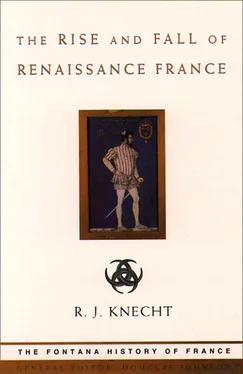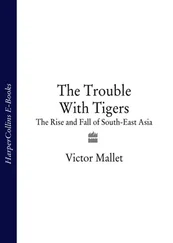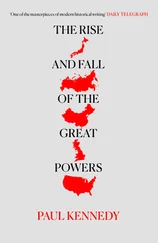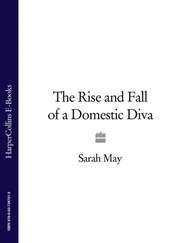On 22 September the government raised a loan of 200,000l. from the Parisian public against the security of the municipal revenues. This marked the beginning of the system of public credit, known as the Rentes sur l’Hôtel de Ville. Each contributor to the loan was assured of a life annuity or rente , carrying a rate of interest of 8 1/ 3per cent which was paid out of the receipts from various local taxes. As the interest was paid by municipal officials of the same social background as the lenders, the system rested on a fair measure of mutual trust, yet Parisians showed little enthusiasm for the scheme.
The battle of La Bicocca (27 April 1522)
The sudden death of Leo X on 1 December 1521 changed the situation in Italy. As the flow of money from papal coffers to Colonna’s army dried up, the French under Marshal Lautrec reorganized themselves. Much, however, hung on the result of the next papal conclave. Francis threatened to sever his allegiance to the Holy See if Cardinal Giulio de’ Medici, leader of the imperial faction in the Sacred College, were elected. In the event, the cardinals chose Adrian of Utrecht, Charles V’s old tutor and regent in Spain. Francis was understandably furious, but Adrian, who took the name of Hadrian VI, approached his new duties in a truly Christian spirit. Denying that he owed his election to Charles, he refused to be drawn into the anti-French league. His main objective was to pacify Christendom as the first step towards arranging a crusade against the Turks, who now threatened Rhodes, the last Christian outpost in the eastern Mediterranean. Francis, however, was more interested in regaining Milan.
In March 1522, Lautrec, whose army had been reinforced by 16,000 Swiss, laid siege to Milan, but, finding the city too strong, he turned his attention to Pavia. Francesco Sforza was thus able to put more troops into Milan, much to the chagrin of Francis who accused his captains in Italy of incompetence. He declared his intention of returning there himself, but was overtaken by events. Emerging from Milan, Colonna threatened Lautrec’s rear, whereupon the marshal lifted the siege of Pavia and marched to Monza. Colonna followed at a safe distance and encamped in the grounds of a villa north-west of Milan, called La Bicocca. He fortified his camp with ditches, ramparts and gun platforms. Lautrec saw the madness of attacking it, but his Swiss troops, who had grown tired of marching and counter-marching to no purpose, threatened to leave unless he engaged the enemy at once. He begged them to think again, but eventually conceded their demand. On 27 April they attacked the imperial camp only to be decimated. Some 3000 were killed, leaving the rest to return to Switzerland utterly humiliated. Lautrec, after a vain attempt to hang on to Lodi, returned angrily to France. His brother Lescun surrendered Cremona soon afterwards. On 30 May, Genoa capitulated. Only the castles of Milan and Cremona remained in French hands. The French débâcle in Italy was soon followed by England’s entry into the war. On 29 May an English herald appeared before Francis in Lyon and declared war in Henry’s name. Hostilities began in July when the earl of Surrey raided Morlaix. In September he led an army out of Calais and tried unsuccessfully to provoke the French into giving battle. Within a month, however, his supplies ran out, forcing him to withdraw to Calais.
While the princes of Christendom were fighting each other, Rhodes fell to the Turks. Hadrian VI urged the princes to sink their differences and join a crusade; but Francis insisted on Milan being restored to him first. The pope, he said, had no canonical right to impose a truce under threat of spiritual sanctions. He reminded Hadrian of the fate that had befallen Pope Boniface VIII in the fourteenth century when he had opposed the French king Philip the Fair. In June he banned the export of money from France to Rome and dismissed the papal nuncio from his court. These measures only served to drive Hadrian into the imperial camp. On 3 August he joined a league for the defence of Italy.
The enquiry commissions of 1523–4 and fiscal reform
By 1523 there was not enough money in the king’s coffers to pay for the war. Francis had to look for new sources of income. He suspected that he was being cheated by his own fiscal officials, and set up a commission to audit their accounts and to punish any malpractices. Not even Semblançay, who had done so much to assist the king out of his difficulties, was spared, yet his only fault had been not to distinguish between the king’s purse and his mother’s. At the end, the commissioners found that he owed Louise 707,267 livres , but that he was owed 1,190,374 livres by the king.
Francis and his ministers also began reforming the fiscal administration. The revenues most susceptible to corruption were the irregular ones, which were collected and handled in an ad hoc way by many officials. A measure of centralization was needed to ensure that they were properly collected, used and accounted for. The first step taken in this direction was the creation on 18 March of the Trésorier de l’Epargne with powers to collect and disburse all royal revenues save those from the demesne and from regular taxation. Alone among the fiscal officials, he was exempt from supervision by the trésoriers de France and généraux des finances. He took his oath of office to the king alone. The first man appointed to the post was Philibert Babou. In December his powers were considerably enlarged. He was now to receive all royal revenues after deduction of customary local expenses and authorized to make disbursements sanctioned only by royal warrants. This, however, was too heavy a burden. In June 1524, Babou was made responsible only for revenues from the demesne and taxation, while another official, called Receveur des parties casuelles , was put in charge of the rest.
In July 1524 an edict claimed that the new fiscal system had proved a success. The king had apparently been spared the need to cut back wages and pensions and had cleared many debts. Although part of his revenues continued to be spent locally, the fact that all payments now had to be authorized by a single official instead of a dozen meant that the king had a tighter control of expenditure. He was also better able to know how much cash he disposed of for emergencies. Another effect of the reforms was the destruction of the influence of the trésoriers de France and généraux des finances. Their offices survived, but their powers were drastically reduced: they continued to carry out inspections in their respective districts, but policy-making was left firmly in the hands of the king and his council.
The treason of Bourbon (1523)
Francis now prepared to lead a new invasion of Italy. On 23 July he went to Saint-Denis and, as was the custom, placed the relics of the patron saint on the high altar, where they were to remain for the duration of the military campaign. On 12 August, at Gien, he appointed his mother as regent for the second time. Four days later, however, he received a letter from Louis de Brézé, sénéchal of Normandy, warning him of a treason plot by the Constable of Bourbon.
Charles duc de Bourbon was Francis I’s most powerful vassal. He owned three duchies, seven counties, two vicomtés and seven seigneuries. All these territories, save three, formed a compact bloc in central France. In addition to his French fiefs, Bourbon also had three lordships within the Holy Roman Empire, making him the vassal of both the emperor and the king of France. Within his domain he was virtually all-powerful: he raised troops, levied taxes, dispensed justice and summoned the estates. His chateau at Moulins was one of the finest in France. As constable, Bourbon had charge of the king’s army in peacetime: he enforced discipline, supervised supplies, appointed commissioners of musters, authorized military expenditure and allocated troops to garrison towns. In wartime he commanded the army in the king’s absence or the vanguard in his presence. On ceremonial occasions he carried the king’s naked sword. Bourbon was also Grand chambrier , responsible for the smooth running of the king’s chamber, and governor of Languedoc, where he represented the king though he delegated his functions to a lieutenant. The duke was related to Francis by marriage, for his wife Suzanne was Louise of Savoy’s first cousin.
Читать дальше












